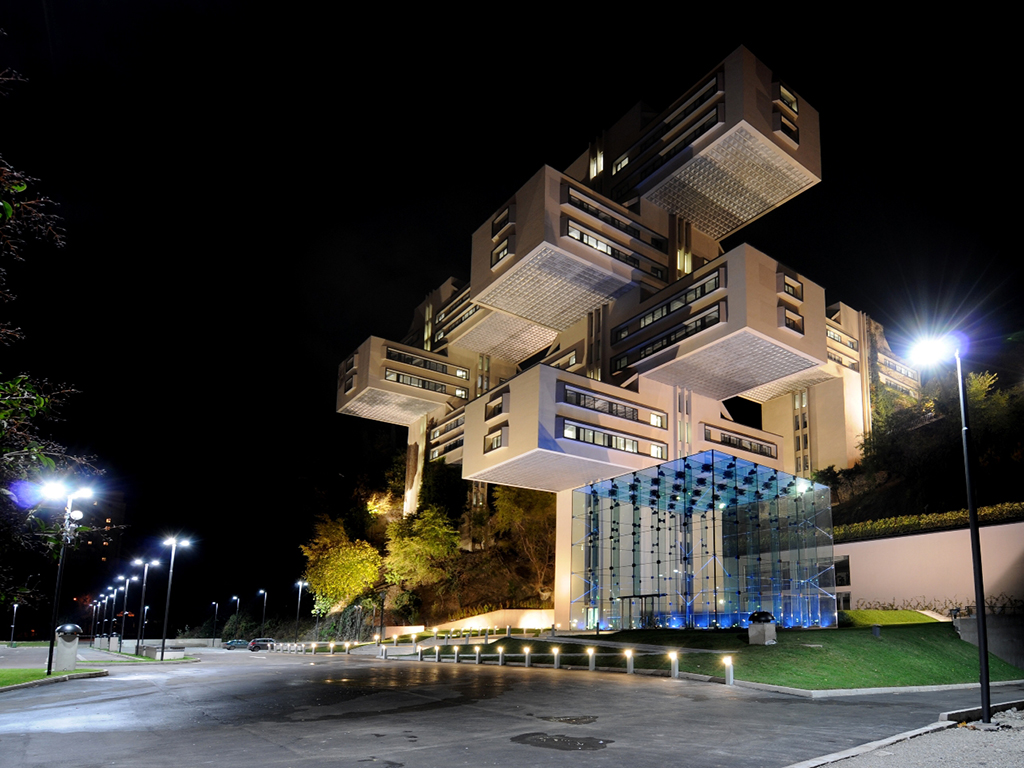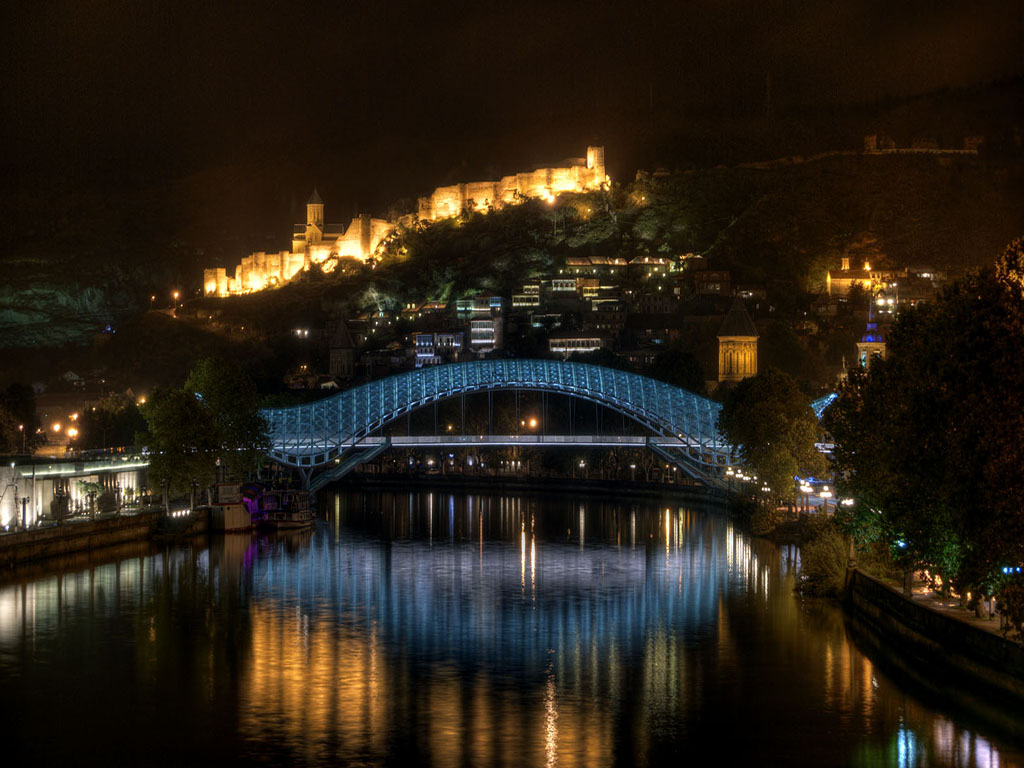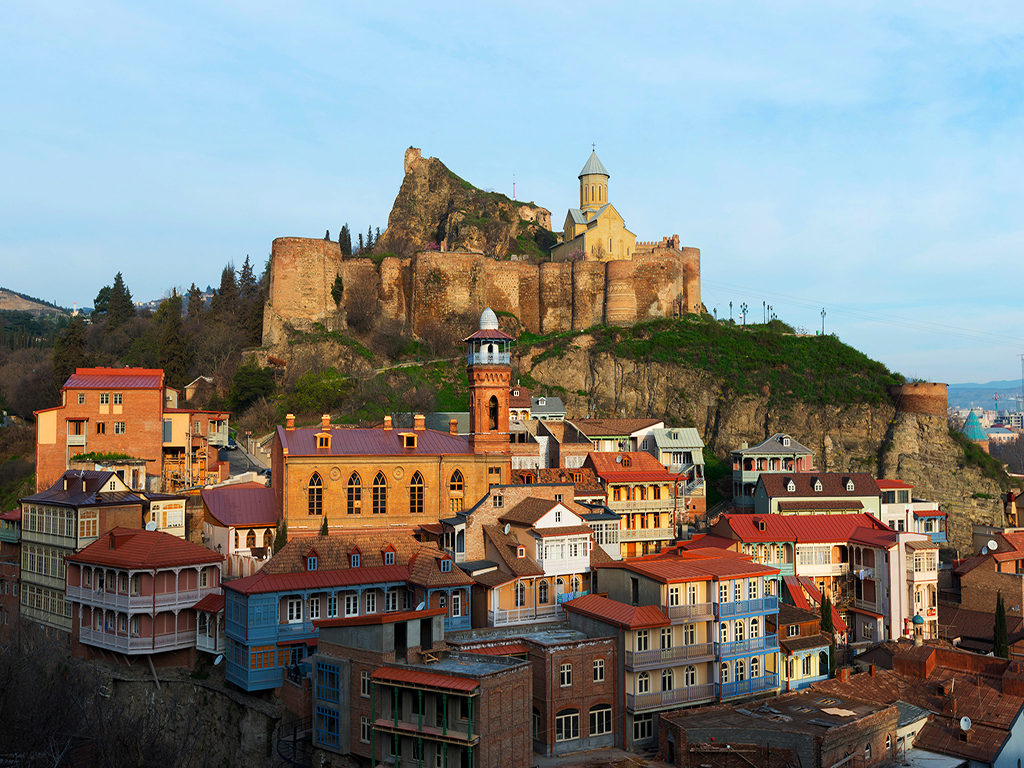Tbilisi
Tiflis (Georgian თბილისი Tbilisi, until 1936 ტფილისი Tpilisi) has been the capital of the country since the 5th century.
Although the settlement history of Tbilisi extends to the Bronze Age according to the archeological avidencies.
Tiflis was founded by the legendary Georgian king Vakhtang Gorgasali (458). As the legend tells, a pheasant killed by him is dying in one of the numerous sources of sulfur springs and has been cooked there immediately. The king founded the town of Tpilisi on the spot. These natural sources of sulfur were also the namesake of the city. "Tbili" in Georgian means - warm.
Situated strategically and economically at the river Mtkvari, Tbilisi quickly became the political and cultural center of the country. Through Mtskheta and Tbilisi, the most important trade routes have been running from east to west, as well as from south to north, for many centuries. Present day Tbilisi is the city of great strategic importance.
In the time of the Georgian Renaissance it was one of the most important and richest cities of the Middle Ages, as the Venetian Marco Polo tells us.
Today, Tbilisi offers the visitor unique atmosphere. In Tbilisi, the cosmopolitan city along the river Kura (mtkvari) are old caravanserai, sacred buildings of different religions, including the old town with the sulfur baths. You can visit Georgian Orthodox churches, the Jewish Synagogue, the Armenian Bishops' Church, a Muslim mosque and a Zoroastrian temple in just 150 yards.
The Rustaveli Avenue offers the plentiful life of a southern metropolis with its theaters, shops and street cafes. On this grandiose road, you will find important cultural institutions and the most important political institutions in the country. Unique gold treasures await visitors at the state Museum.




